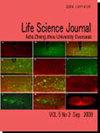印度核安全架构与辐射灾害应对进展与挑战
引用次数: 0
摘要
印度的核安全架构有三个方面:基础设施安全,包括核电站的物理安全;港口和边境安全,包括培训和能力建设,以防止任何非法贩运核材料进入该国;在辐射紧急情况下,中心和国家一级的机构间协调。然而,在所有这三个领域都存在结构性弱点,需要加以考虑。当务之急是不仅要发展核材料的安全处理、运输和处置能力,还要制定严格的网络安全法、边境安全措施,以及在危机局势中为普通民众的安全和保障进行中央国家职能协调。以下文件旨在应对这些挑战,并为加强印度的核安全和救灾框架提出建议。该文件借鉴了美国能源部核走私探测和威慑办公室支持的2019年国际化学品安全方案走私和辐射探测讲习班关于非法贩运放射性材料的建议。本文章由计算机程序翻译,如有差异,请以英文原文为准。
Nuclear Security Architecture & Radiological Disaster Response in India Progress and Challenges
The nuclear security architecture in India is three-fold: the infrastructure security including physical security of the nuclear plant; port and border security including training and capacity building to prevent any illicit trafficking of nuclear material into the country and; the inter-institutional coordination at the Centre and State level during radiological emergencies. However, there exist structural weaknesses that need to be accounted for in all these three areas. It is imperative to develop capacities not only for safe handling, transport and disposal of nuclear material but also instituting stringent cyber-security laws, border security measures and functional Centre-State coordination in crisis situation for the safety and security of the general population. The following paper seeks to address these challenges and provide recommendations for strengthening the nuclear security and disaster response framework in India. The paper draws recommendations from the 2019 IPCS workshop on Smuggling and Radiation Detection, on the illicit trafficking of radioactive materials supported by the Office of Nuclear Smuggling Detection and Deterrence (NSDD) of the United States Department of Energy (DOE).
求助全文
通过发布文献求助,成功后即可免费获取论文全文。
去求助
来源期刊
自引率
0.00%
发文量
0
审稿时长
2-4 weeks
期刊介绍:
Life Science Journal, the Acta Zhengzhou University Oversea Version, is an international journal with the purpose to enhance our natural and scientific knowledge dissemination in the world under the free opinion/idea publishing principle. The journal is calling for papers from all the world. All the valuable papers or reports that are related to life sciences - in their broadest sense - are welcome. Other academic articles that are only certain relevant but are of high quality will also be considered and published. Papers submitted could be reviews, objective descriptions, research reports, opinions/debates, news, letters, and other types of writings. All submitted manuscripts will be sent for external peer review and processed the editorial work. After the peer review, the journal will make the best efforts to publish the accepted valuable articles as soon as possible. Let''s work together to disseminate our research results and our opinions/ideas.

 求助内容:
求助内容: 应助结果提醒方式:
应助结果提醒方式:


